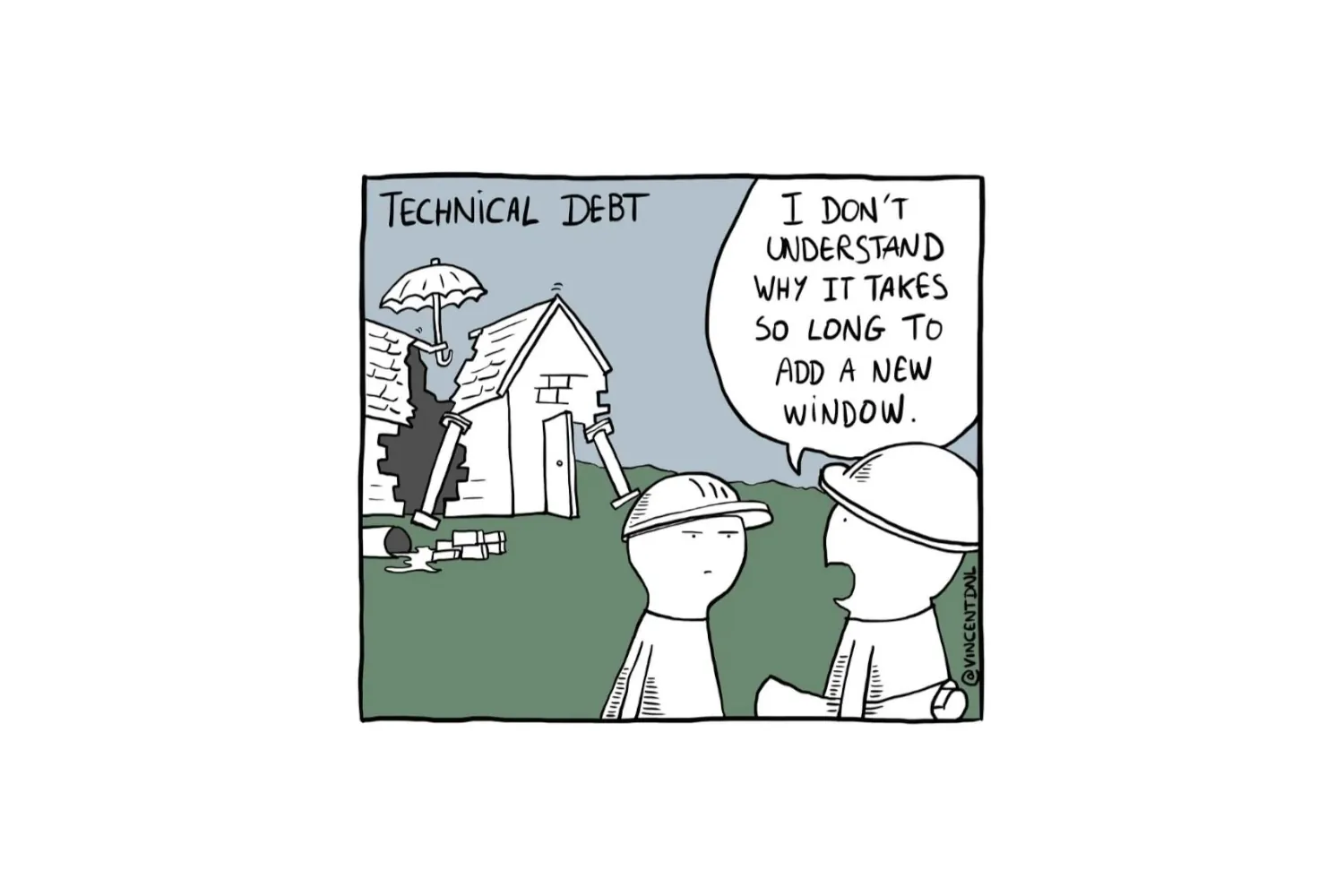Dev teams often face a tough choice between meeting deadlines and ensuring code quality. This trade-off frequently leads to the accumulation of technical debt—the future cost of maintaining and updating a codebase that was built with compromises.
Technical debt isn’t inherently bad; it can be a strategic choice to meet short-term goals. However, unmanaged debt can quickly spiral out of control, hampering a team’s ability to deliver features, fix bugs, or scale efficiently. This article explores strategies for identifying, managing, and addressing technical debt in software design.
Understanding Technical Debt
Technical debt is the metaphorical cost of choosing an easy or quick solution over a more effective but time-consuming approach. It can manifest in various ways, including:
1. Code Debt: Poorly written or overly complex code.
2. Design Debt: Suboptimal architectural decisions.
3. Testing Debt: Lack of automated tests or inadequate test coverage.
4. Documentation Debt: Missing or outdated documentation.
5. Process Debt: Inefficient workflows or lack of standardization.
The key challenge lies in balancing the need for speed with the long-term health of the software.
Signs of Technical Debt
Unaddressed technical debt can have cascading effects on a software project. Common indicators include:
• Frequent bugs and regressions.
• Difficulty onboarding new team members due to confusing code or documentation.
• Increased time to add new features.
• Poor system performance or scalability issues.
• Developer frustration or burnout.
Recognizing these signs early allows teams to take proactive steps to address the debt before it becomes unmanageable.
Strategies for Managing Technical Debt
1. Acknowledge and Document Debt
The first step in managing technical debt is recognizing its existence. Keep a record of known issues, architectural compromises, and other forms of debt. Tools like JIRA or Trello can be used to track technical debt alongside regular tasks.
2. Prioritize Debt Repayment
Not all debt needs to be repaid immediately. Use a framework like the Impact vs. Effort Matrix to evaluate which debts should be addressed first. High-impact, low-effort tasks should take precedence.
3. Integrate Debt Management into Sprints
Allocate time in each sprint for addressing technical debt. This prevents it from accumulating unchecked while maintaining a focus on delivering new features.
4. Refactor Incrementally
Large-scale refactoring projects can be disruptive and risky. Instead, adopt incremental refactoring by improving the codebase in small, manageable chunks.
5. Adopt Automated Testing
A robust test suite acts as a safety net, allowing developers to refactor with confidence. Invest in automated tests early to minimize the risk of introducing regressions.
6. Educate the Team
Encourage a culture of quality by training team members on best practices in code design, testing, and documentation. Make everyone aware of the long-term costs of technical debt.
7. Leverage Tools
Use static analysis tools like SonarQube, ESLint, or CodeClimate to detect code smells and other issues. These tools help maintain code quality and reduce technical debt.
8. Define “Good Enough”
Not every piece of code needs to be perfect. Define acceptable standards for quality that align with your project’s goals and constraints. This helps avoid analysis paralysis.
When to Take on Technical Debt
In some cases, technical debt can be a deliberate and strategic choice. For example:
• Startup environments: Speed to market is critical, and the trade-off may be worth it.
• Prototyping: Temporary code that will likely be discarded can afford to cut corners.
• Deadline-driven projects: Meeting a launch date might justify short-term compromises.
However, it’s essential to have a plan for addressing this debt later.
Avoiding the Debt Spiral
Unchecked technical debt can lead to a situation where all development efforts are consumed by maintenance and bug fixes. To prevent this:
• Perform regular technical debt reviews.
• Keep stakeholders informed about the risks of accumulating debt.
• Foster a culture where addressing debt is seen as a shared responsibility, not just a developer task.
The Payoff of Addressing Technical Debt
Addressing technical debt is an investment in the future of your software. The benefits include:
• Faster feature development.
• Improved system performance.
• Reduced maintenance costs.
• Enhanced team morale and collaboration.
By tackling technical debt systematically, teams can strike a balance between speed and sustainability, ensuring long-term success for their projects.
Conclusion
Technical debt is an unavoidable aspect of software development, but it doesn’t have to derail your project. By recognizing its presence, setting priorities, and embedding debt management into your processes, you can maintain a healthy codebase while meeting business goals. Remember, the goal isn’t to eliminate technical debt entirely but to manage it effectively. With a proactive approach, you can keep your software robust, adaptable, and ready for the future.
